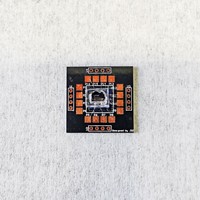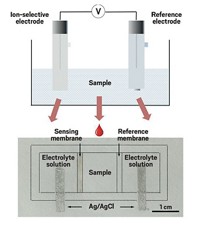Advertisement
Grab your lab coat. Let's get started
Welcome!
Welcome!
Create an account below to get 6 C&EN articles per month, receive newsletters and more - all free.
It seems this is your first time logging in online. Please enter the following information to continue.
As an ACS member you automatically get access to this site. All we need is few more details to create your reading experience.
Not you? Sign in with a different account.
Not you? Sign in with a different account.
ERROR 1
ERROR 1
ERROR 2
ERROR 2
ERROR 2
ERROR 2
ERROR 2
Password and Confirm password must match.
If you have an ACS member number, please enter it here so we can link this account to your membership. (optional)
ERROR 2
ACS values your privacy. By submitting your information, you are gaining access to C&EN and subscribing to our weekly newsletter. We use the information you provide to make your reading experience better, and we will never sell your data to third party members.
Diagnostics
New lateral flow tests give quantitative data
Devices use particles with shells made of the conducting polymer polypyrrole
by Bethany Halford
September 17, 2022
| A version of this story appeared in
Volume 100, Issue 33
Not long ago, referring to a lateral flow test would have resulted in blank stares, even though they’re common diagnostic devices used in over-the-counter pregnancy tests, for example. But the COVID-19 pandemic has added lateral flow to the lexicon; these diagnostics are the rapid tests people use to determine if they are infected with the SARS-CoV-2 virus. While lateral flow tests are good for giving qualitative data, such as if you have a virus or not, doctors would like to have versions of these easy-to-use diagnostics that give quantitative data. Such tests could help people gauge all sorts of health-care information at home: blood sugar, cholesterol, or even how much virus is circulating in their system.
Scientists have developed various quantitative versions of lateral flow tests, but they typically need complex analytical setups to read the results, which makes them impractical for home use. Chemists at the Massachusetts Institute of Technology led by Timothy M. Swager, Jie Li, and Weize Yuan now report a quantitative lateral flow test that can be read with a smartphone (J. Am. Chem. Soc. 2022, DOI: 10.1021/jacs.2c06579).
The new lateral flow tests feature particles with shells made of conducting polypyrrole. Oxidase enzymes, such as glucose oxidase, decorate the particles’ peripheries. When these enzymes encounter glucose, they generate hydrogen peroxide, which boosts the conductivity of the polypyrrole depending on how much glucose is present. A radio-frequency identification tag in the lateral flow test detects this conductivity change and can communicate it to a smartphone. In addition to measuring glucose levels, the chemists show that related methods can quantitatively measure C-reactive protein, a diagnostic marker for inflammation. The method, the researchers say, could be used to test for a variety of biomarkers.




Join the conversation
Contact the reporter
Submit a Letter to the Editor for publication
Engage with us on Twitter